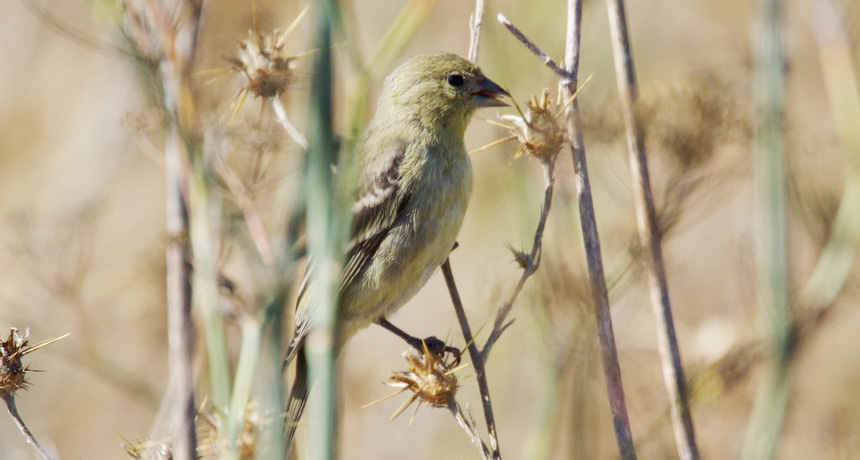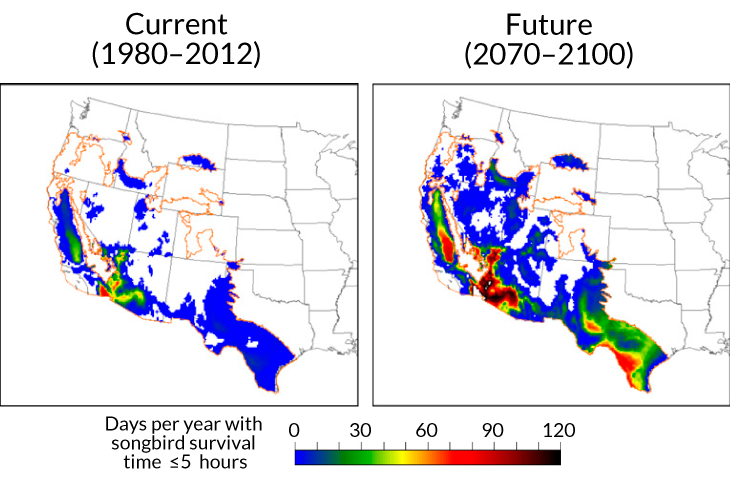Desert songbirds increasingly at risk of dehydration

HOT AND THIRSTY Fatal thirst may become a more frequent risk for desert birds, especially small-bodied ones like this lesser goldfinch, as climate warms.
HarmonyonPlanetEarth/Wikimedia Commons (CC BY 2.0)







